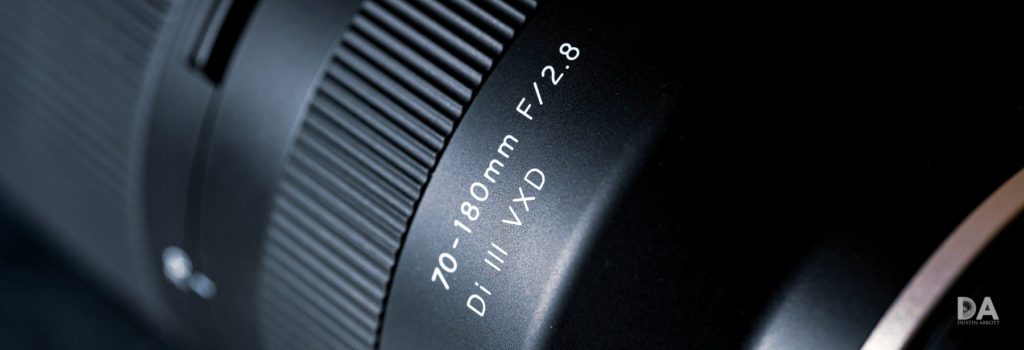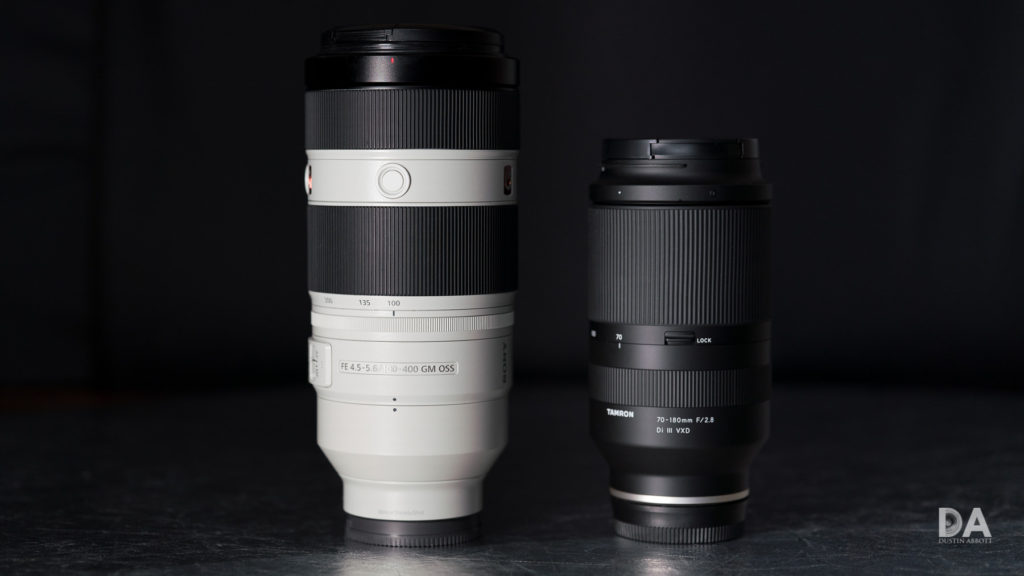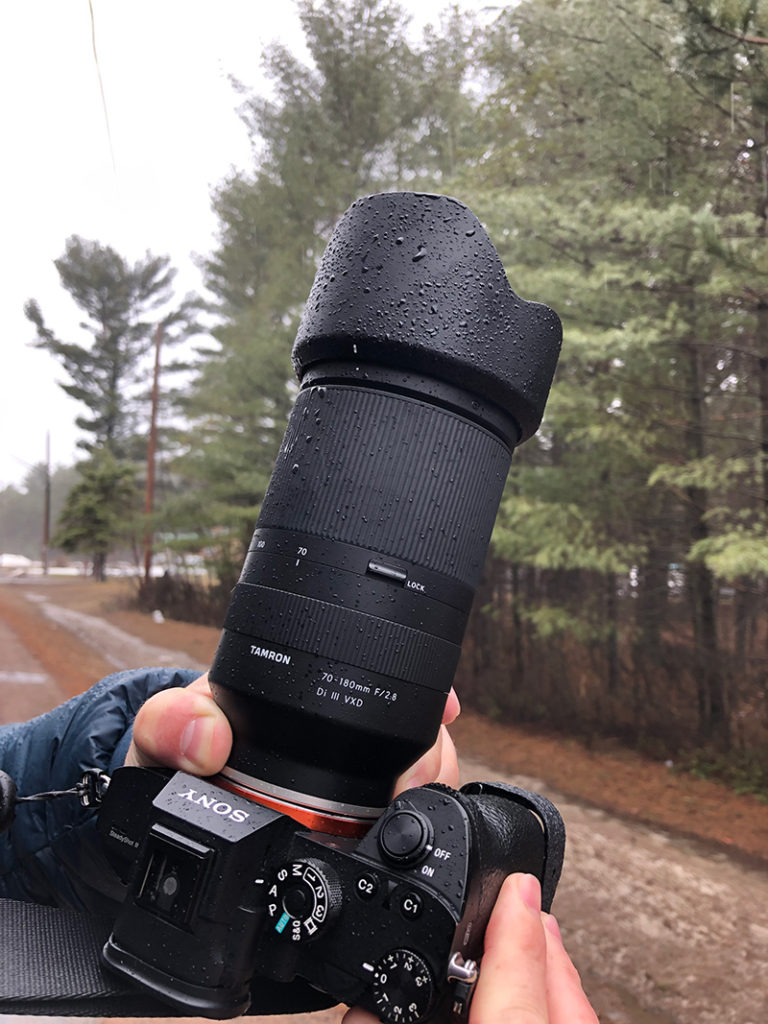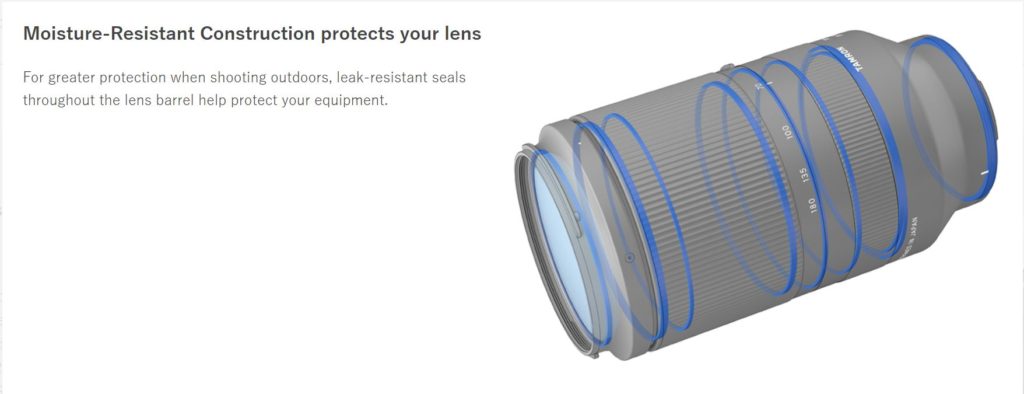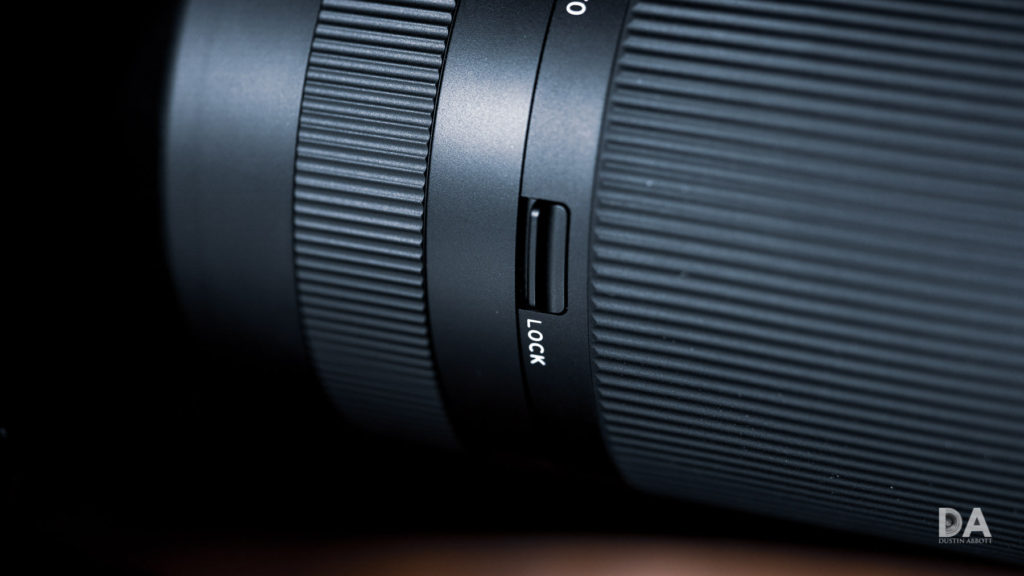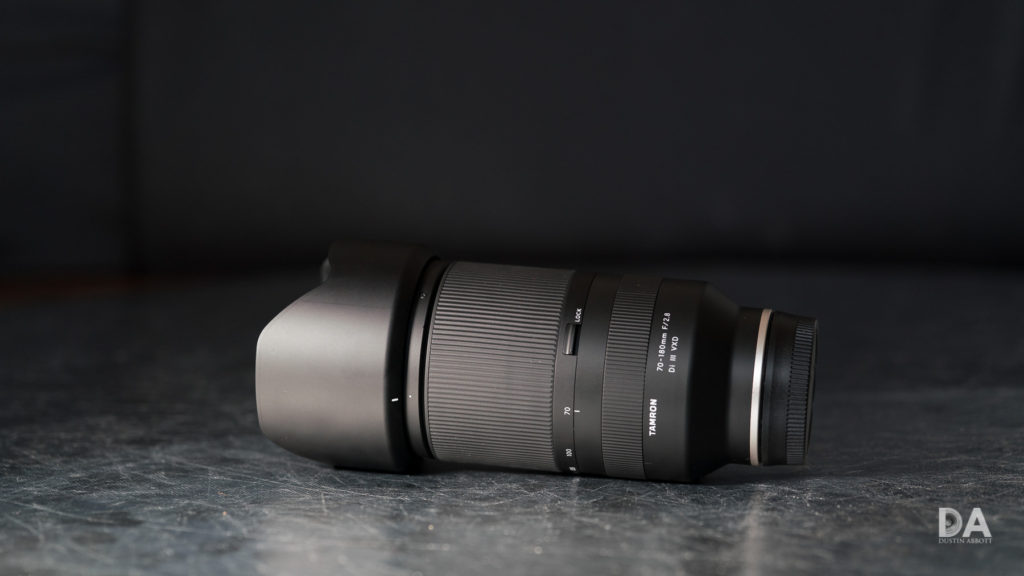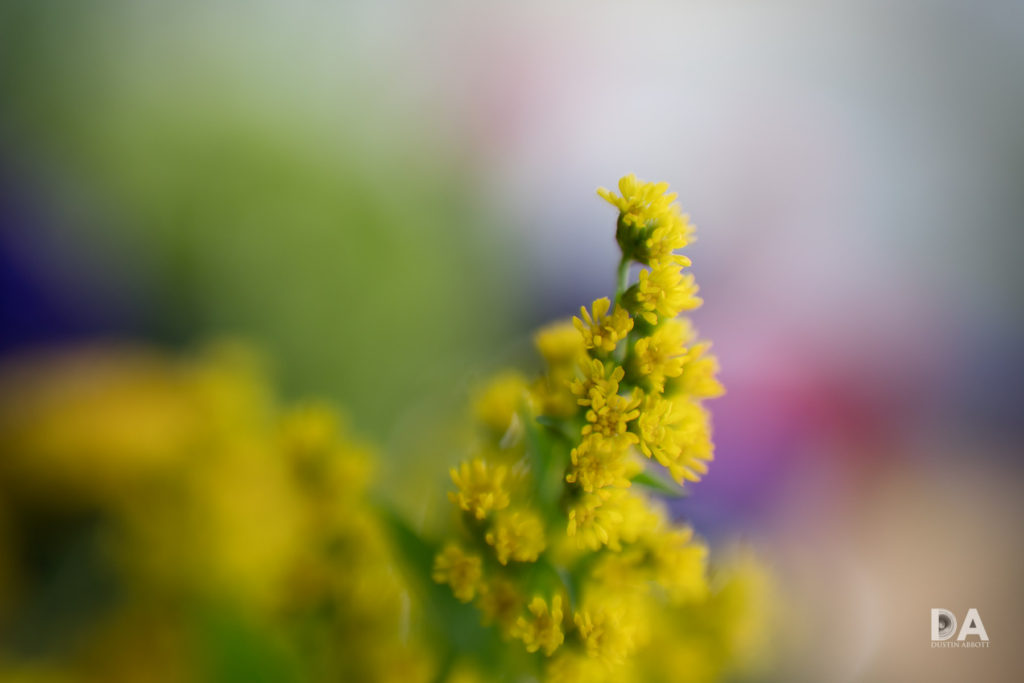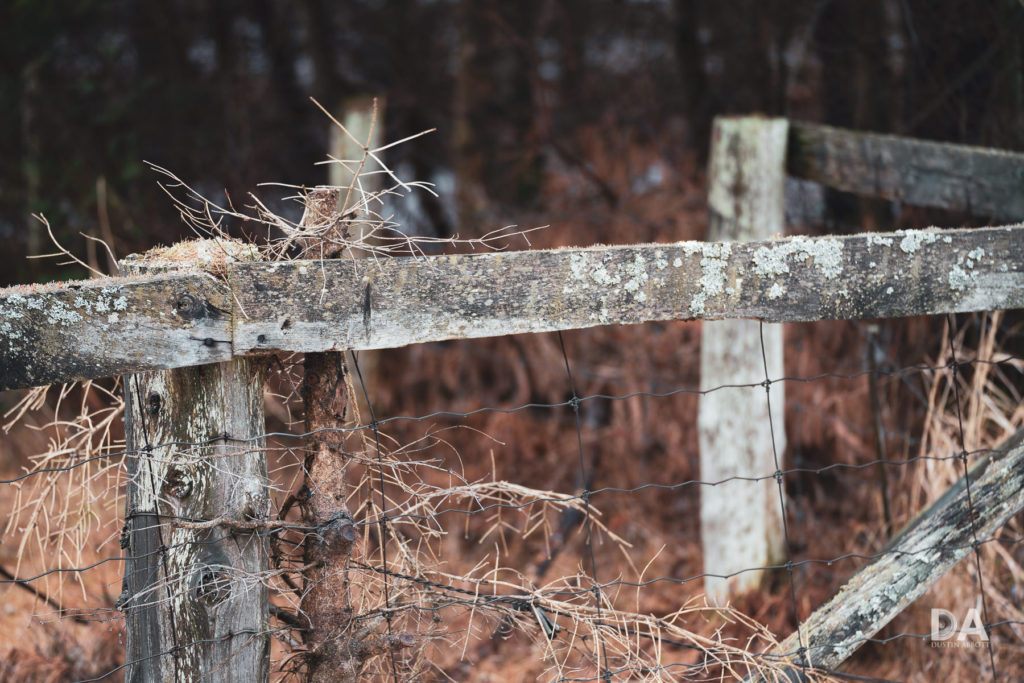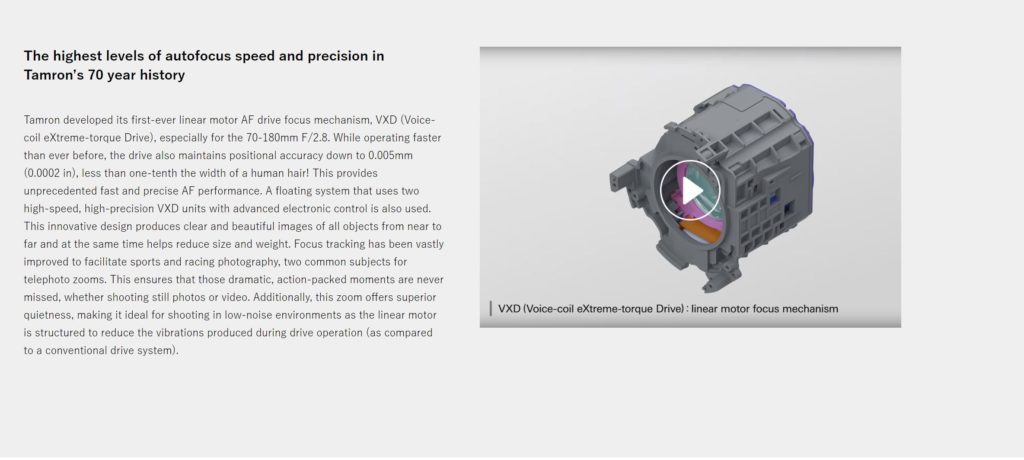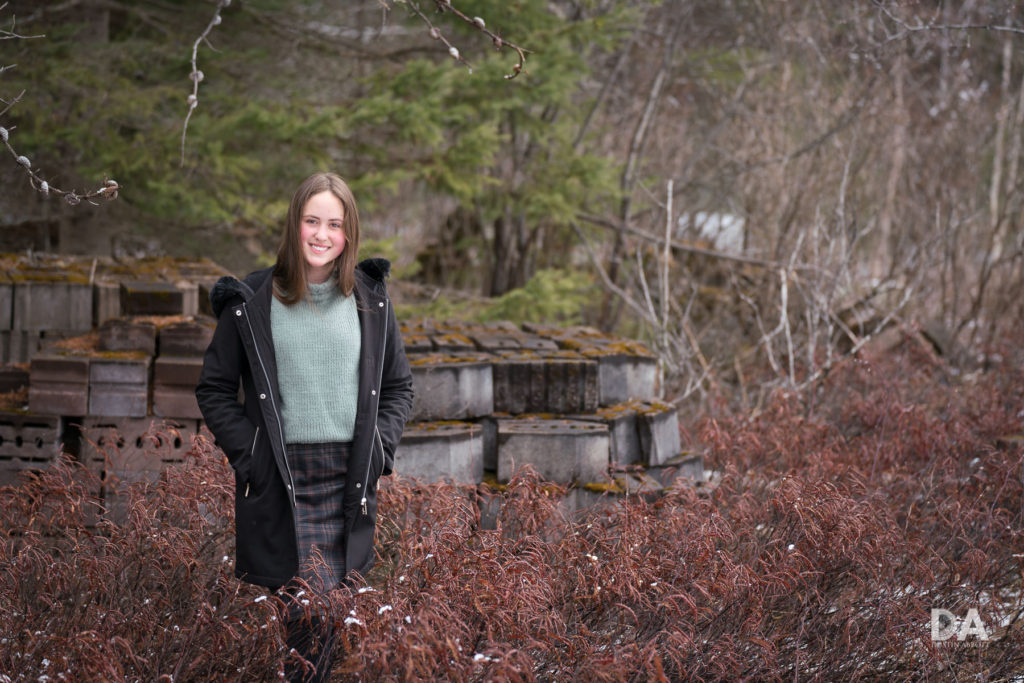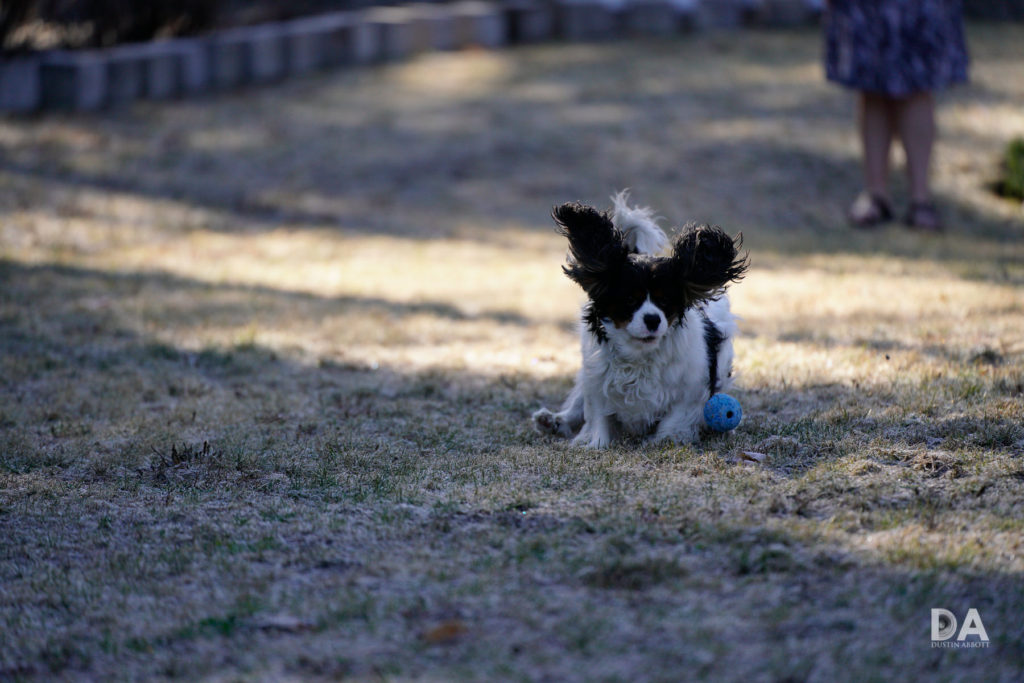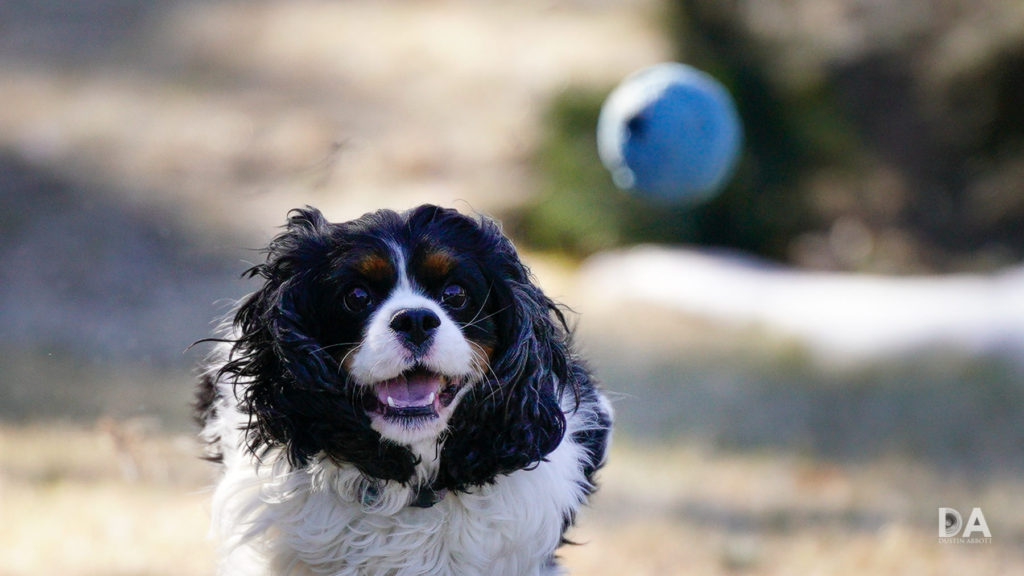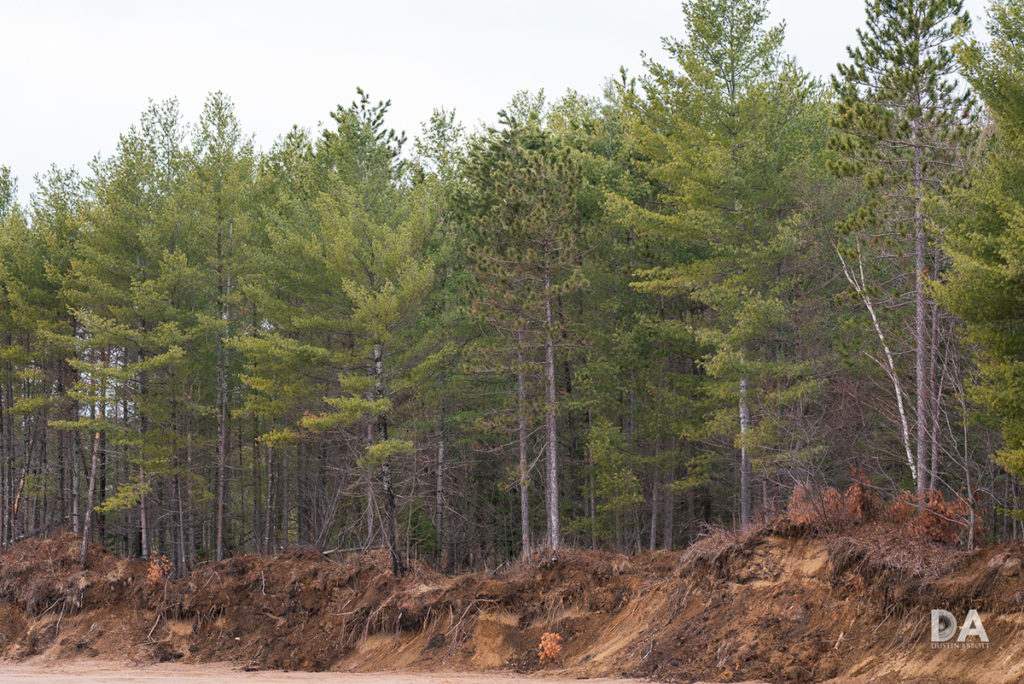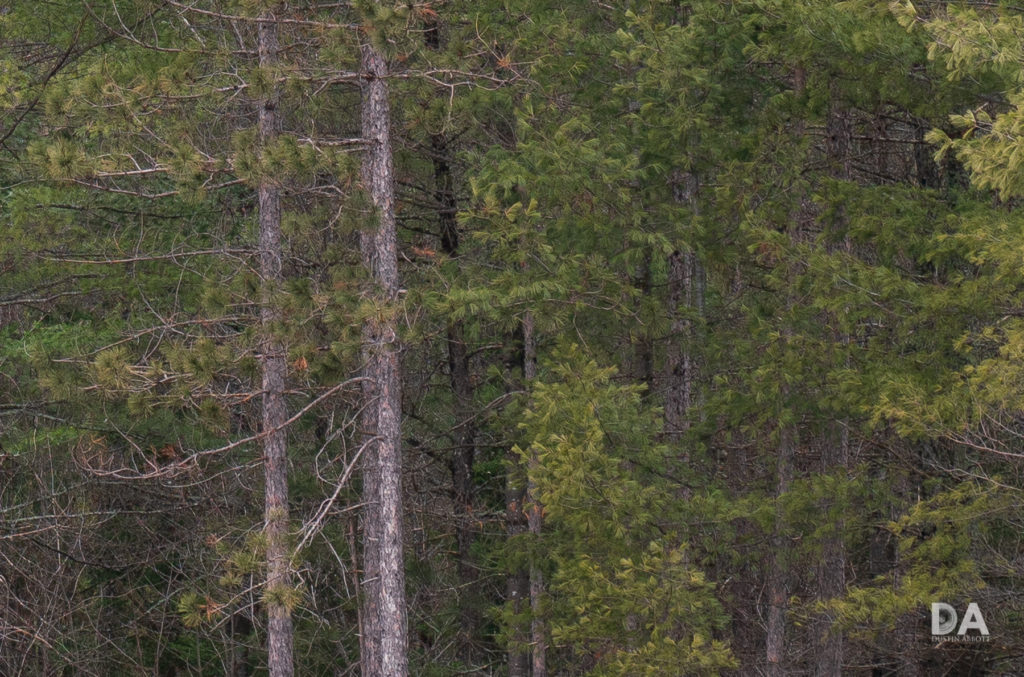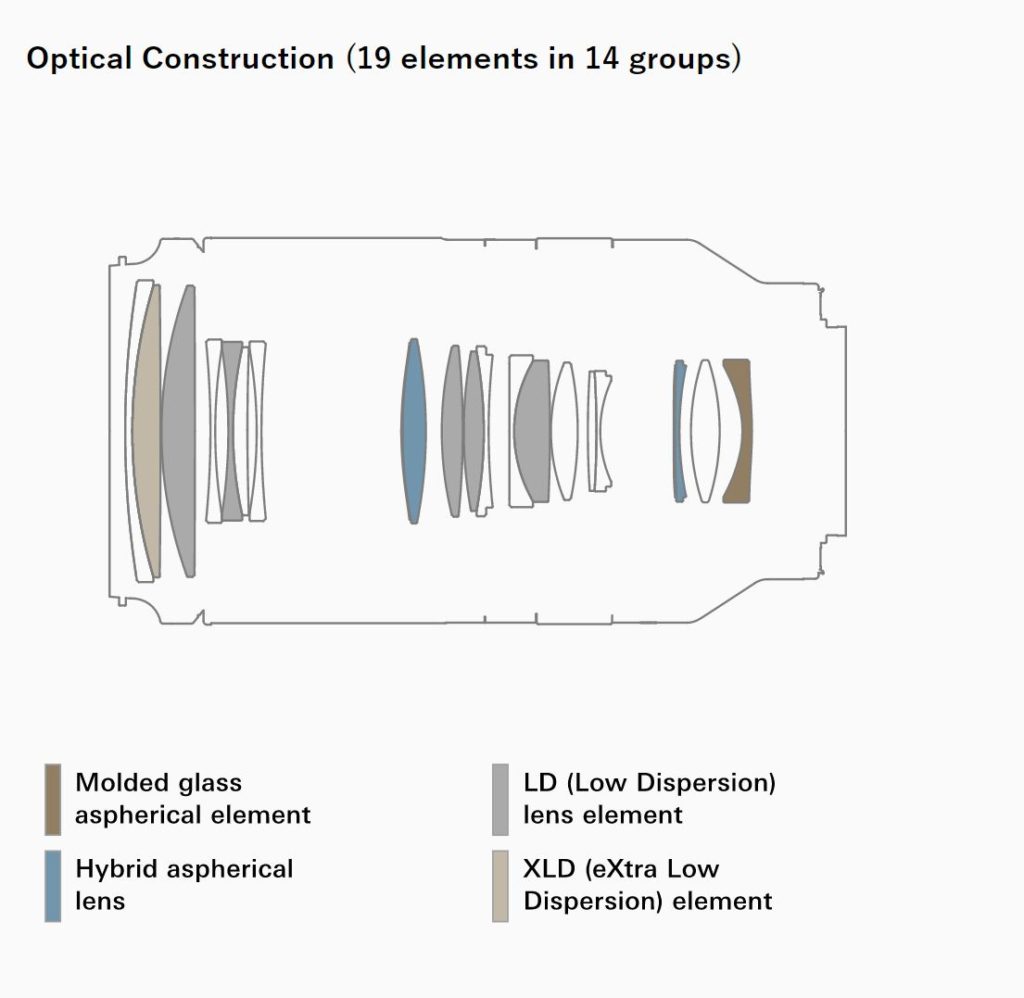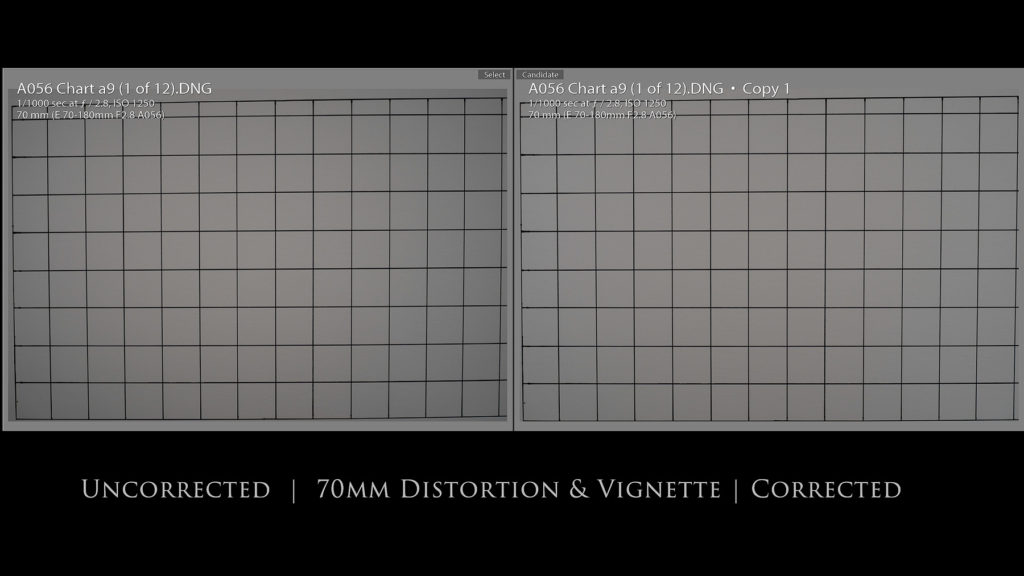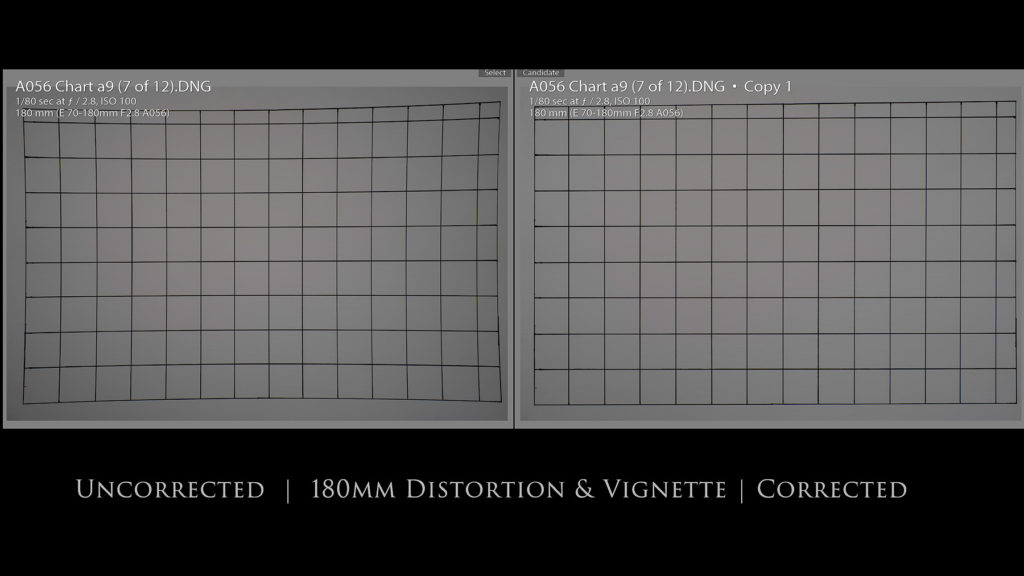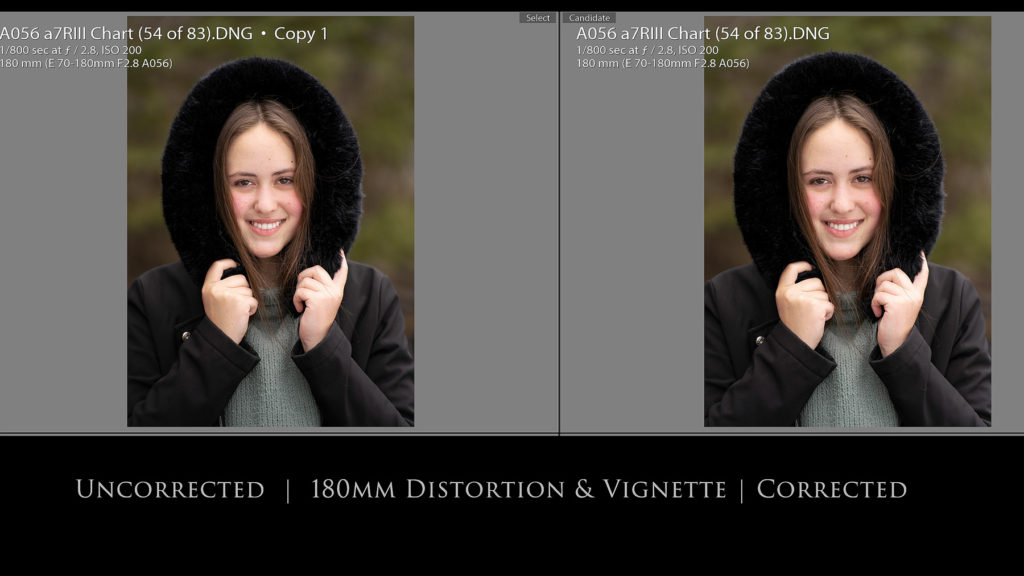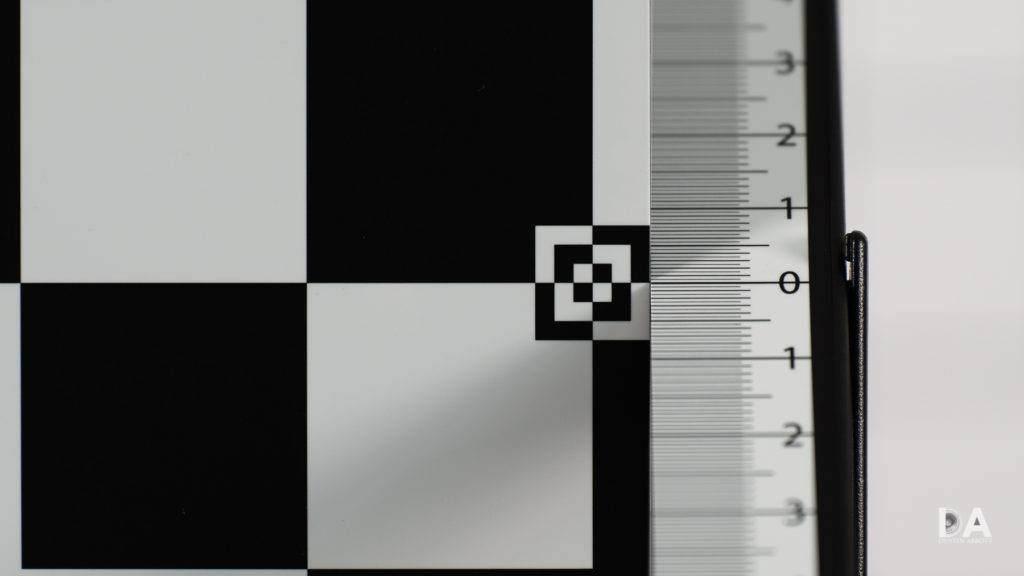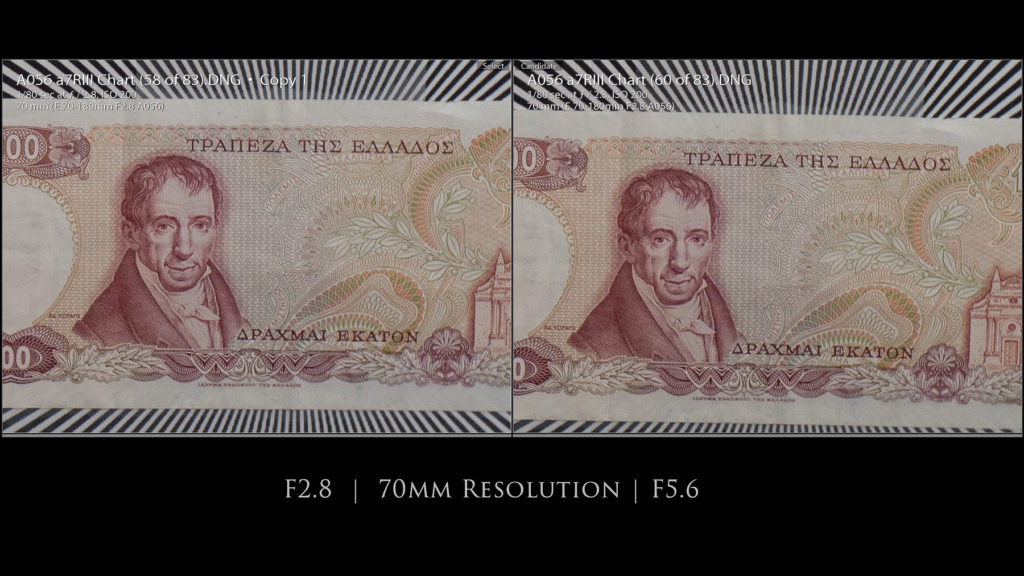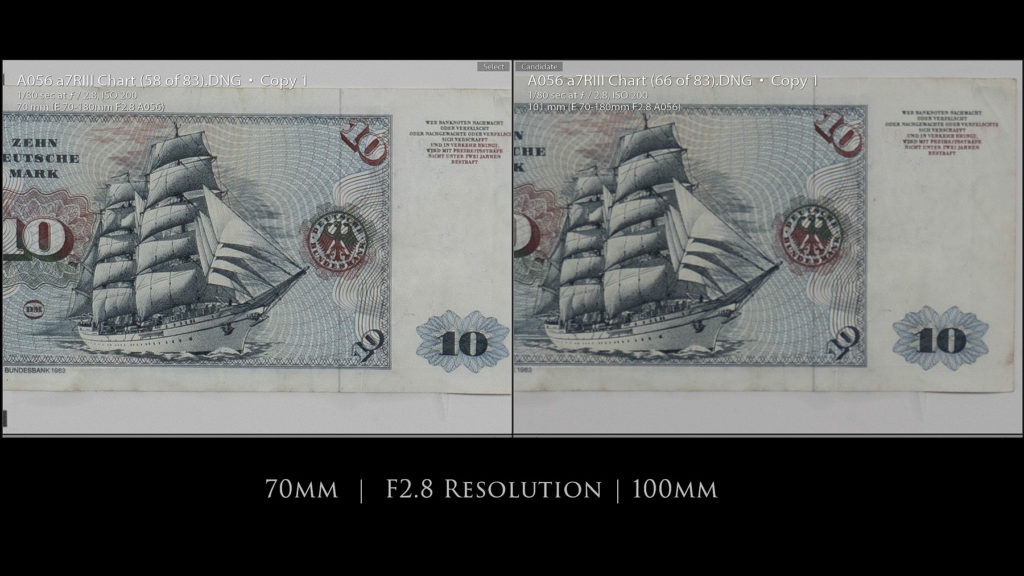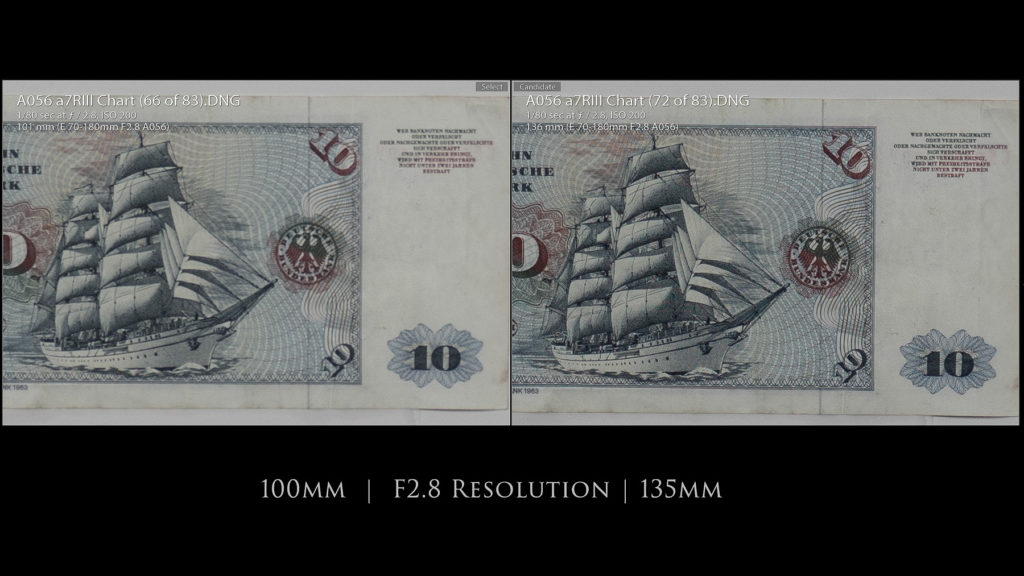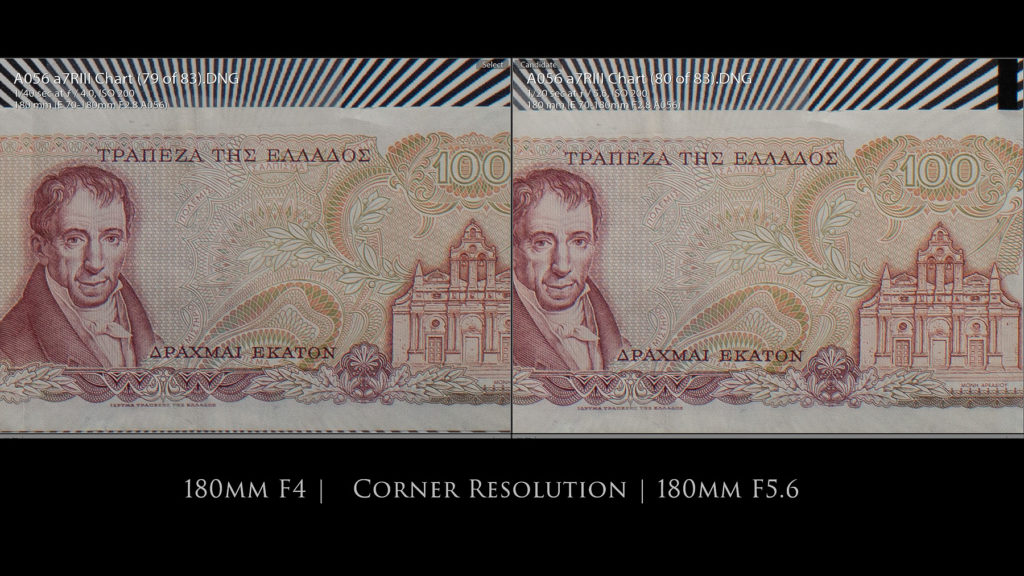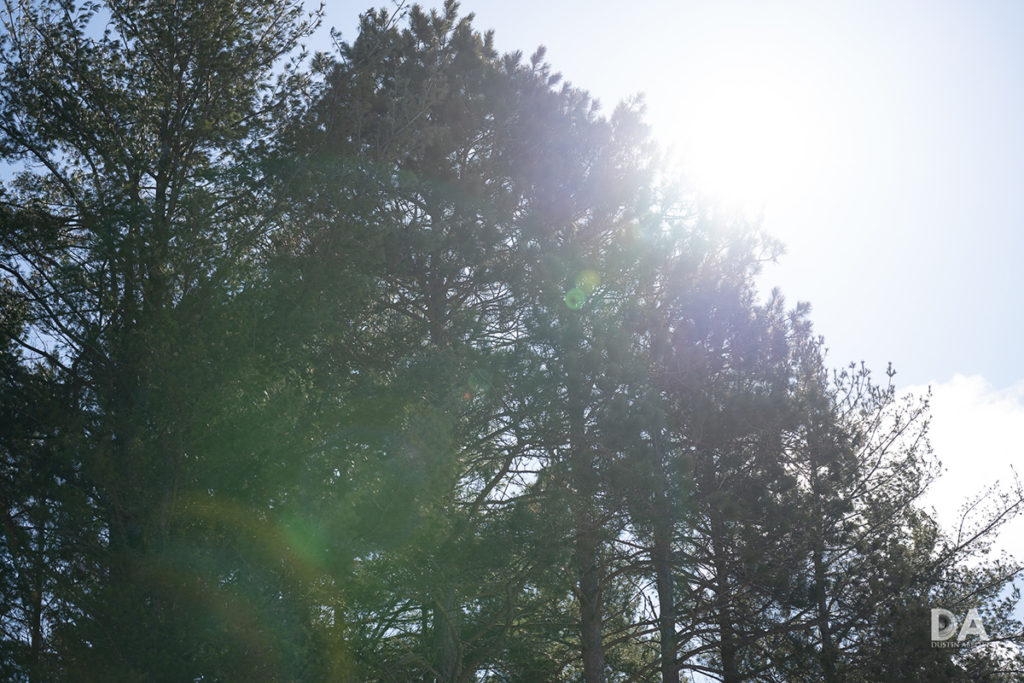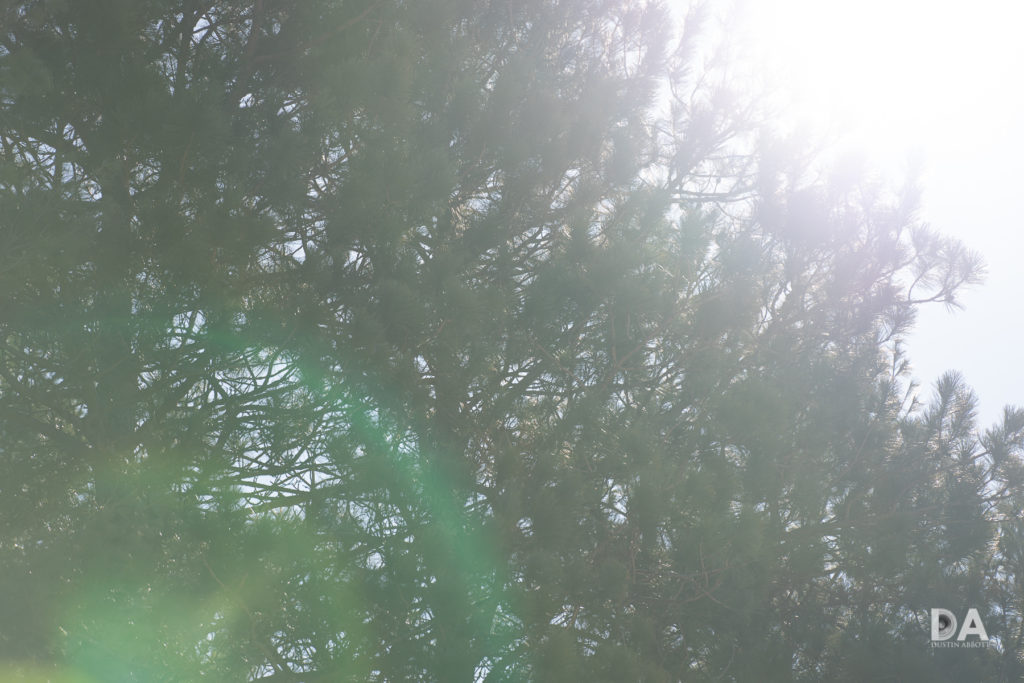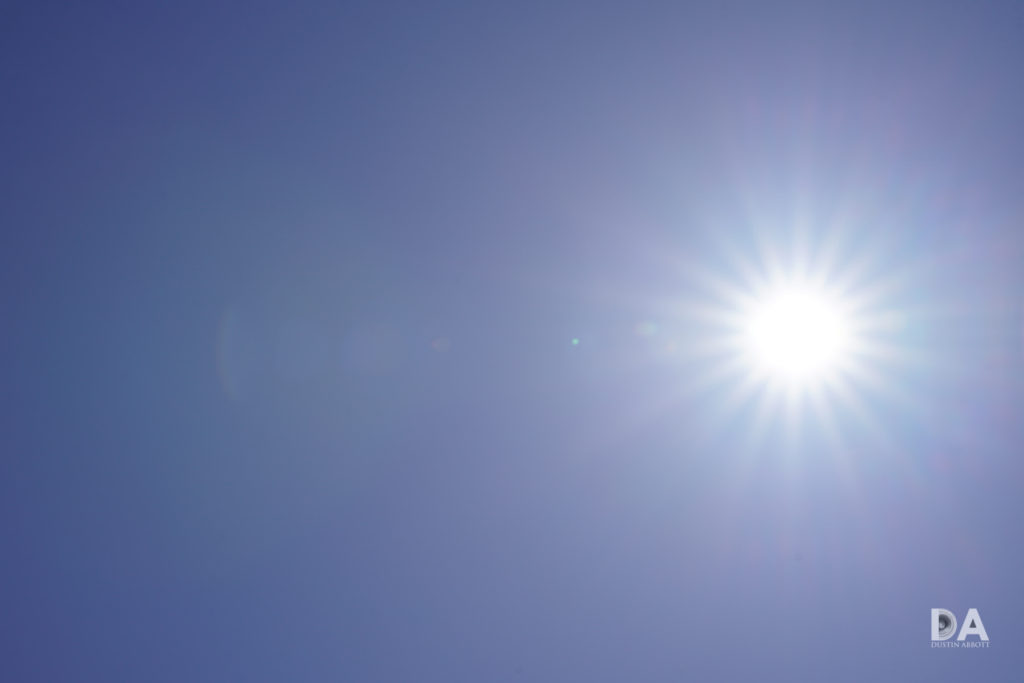The Tamron 70-180mm F2.8 VXD is one of the most highly anticipated lenses of 2020…and that became clear from the moment that it was announced. Tamron has taken a different approach to its fast zooms on Sony. Sony’s own zooms are feature rich and high performing, but they are also at the top end of the class (across platforms) for price, size, and weight. Tamron’s approach has been to reduce the complexity of the lenses (compressed focal lengths, i.e. 28-75mm rather than 24-70mm, 17-28mm vs 16-35mm, and, in this case, 70-180mm vs 70-200mm) and to deliver a stripped down feature set (no external switches or buttons, no aperture ring, etc…). By doing this, they have been able to deliver smaller, lighter, and cheaper lenses that still deliver extremely competitive image quality.
And so far it has worked. The 28-75mm (A036) became the bestselling lens in the world for the year after it was introduced, and the 17-28mm (A046) has also been extremely popular. The 70-180mm VXD (A056) looks to continue that approach.
In some ways, however, the A056 delivers on this premise in the most dramatic way. The Sony 70-200mm F2.8 G Master lens is 200mm long and weighs 1480g. It costs nearly $3300 CDN. The Tamron, by comparison, is only 149mm long and weighs 810g…and costs only $1800 CDN! Tamron is betting that a lens that weighs 58% less, is 30% shorter, and is 83% cheaper will be the kind of formula that will appeal to a LOT of photographers.
That’s obviously a pretty dramatic difference, and it makes a huge difference in how you handle and use the lens. A typical 70-200mm F2.8 is heavy and large, and for many people it brings fatigue sooner than later. I am personally quite fit, but after a day of shooting a wedding, I am physically (and mentally) exhausted. The vastly reduced weight and smaller size of the lens allow one to use the A056 more like a typical lens while still getting the kinds of shots (and the look of shots) that we typically associate with a 70-200mm F2.8.
So on paper the A056 is at the least an intriguing option. But can it deliver the goods optically…and does that new VXD motor bring the speed? That’s what we are here to explore in detail.
Tamron 70-180mm F2.8 VXD Build and Handling
As I noted in the introduction, Tamron has chosen a fairly stripped down approach to these fast zooms. I appreciate the Sony GM approach with a lot of rich features, but I’m not sure (personally) that I would be willing to pay a significant premium for any of them. The upside is that Tamron is able to deliver a clean, modern lens with few visual distractions. The A056 has been equipped with a solid grade of weather resistance, including a rear gasket, internal seals, and a fluorine coating on the front element to help resist oils and water.
The one external features (outside of the zoom and manual focus rings) is a zoom lock. That is present because, unlike most 70-200mm lenses, the A056 is not actually an internally zooming lens. The barrel does extend a bit when zooming out, though the overall length never quite reaches that of a typical 70-200mm. Here’s a look at that extension.
Fortunately the zoom action is actually as smooth as an internally zooming lens, with no sticking points or roughness to the zoom action. There is no wobble in the barrel extension, either. There is little to complain about here, particularly because that bit of external zoom saves us in overall length of the lens (a big deal!) and also probably helps avoid the “focus breathing” issue that was so widely discussed with Tamron’s two previous 70-200mm F2.8 zooms. We’ve got a big improvement here, with a minimum focus distances of 2.8′ (85cm) and a much better magnification of nearly 0.22x. This actually better the Canon EF 70-200mm F2.8L III (0.21x) but doesn’t match the 0.25x of the Sony 70-200mm GM (though, to be fair, the Canon and Sony lenses achieve that at 200mm rather than 180mm).
There’s also a “secret macro mode” you can unlock by manually focusing at 70mm down to only 10.6″ (27cm). The end result is a center focused, highly magnified image (about 0.50x) that makes the outer portion of the image feel like something akin to a zoom blur has been applied.
You obviously need to compose near the center of the frame for this to work, but it is certainly an extra bonus that could be very useful to, say, wedding photographers to get close ups of flowers, dresses, etc…
Tamron has elected to not include their VC (Vibration Compensation) in this lens, choosing to rely on Sony’s IBIS (In Body Image Stabilization) to save size, cost, and weight. On the other two zooms, this has been a perfectly good approach, but it falls apart a bit here. In my tests, I found that I didn’t get as good of results I’m accustomed to seeing with in-lens stabilization. Sony’s IBIS worked quite well for video, but when trying to handhold stills at low shutter speeds I didn’t get nearly as many keepers as I’ve come to expect with Tamron’s VC-equipped lenses. I estimate that I got between 2-3 stops of assistance from Sony’s IBIS in either my a7RIII or a9 bodies with the A056 equipped. This is helpful, obviously, but it only represents about half of what the most recent in-lens stabilization systems have provided.
I always add the caveat that even a perfect image stabilizer can only adjust for movement of the camera and not of the subject. If you are shooting a completely stationary subject, a low shutter speed might produce an acceptable results, but with most living subjects you are better served by keeping your shutter speeds up. If you are working within normal parameters, things will be fine, though you do have to be a little more cautious about shutter speed than if you were working with an exceptionally good VC system.
There is a strong family resemblance to Tamron’s trinity of fast zooms, and, while the 70-200 is easily the largest of the trio, it is actually only a bit longer than the Sony 24-70mm F2.8 and actually weighs less. It will be much easier to transport attached to a camera than any 70-200 you’ve ever used. Another very, very nice asset here is that Tamron has managed to retain the common 67mm filter size across their whole lineup of lenses for Sony FE.
One unfortunate missing ingredient is that the A056 does not appear to be compatible with teleconverters. I attempted to mount a SEL14TC (Sony 1.4x teleconverter) but it would not physically mount, as the protruding front element of the TC did not physically fit into the back of the lens. The opening is a bit squared off, and there just isn’t enough physical clearance for it to insert. I would plan on using the A056 as a bare lens only.
A056 Autofocus Performance
Here’s what the promotional material from Tamron says: “Tamron developed its first-ever linear motor AF drive focus mechanism, VXD (Voice-coil eXtreme-torque Drive), especially for the 70-180mm F/2.8. While operating faster than ever before, the drive also maintains positional accuracy down to 0.005mm (0.0002 in), less than one-tenth the width of a human hair! This provides unprecedented fast and precise AF performance. A floating system that uses two high-speed, high-precision VXD units with advanced electronic control is also used.”
That sounds great…but what is the reality? Pretty fantastic, actually. This is one of the fastest and quietest focusing lenses I’ve ever used, with near instant pulls from close to infinity even at 180mm. Focus speed will not be an issue for anyone, and video focus pulls are smooth, quiet, and precise. I had good success with picking out fine, narrow subjects against busy backgrounds.
Eye AF works well on either human or “pet” subjects, with focus quickly locking on the subject’s eye and delivering well focused results (even in poor light). I had to shoot this photo of my dog at ISO 12,800 because the area where she was laying was so shadowed, but I took three shots from three different focus distances at 180mm and all three were well focused.
This great AF performance makes the lens attractive for portrait work, as it is very easy to get repeatably well-focused results that allow the very good optics of the lens to shine.
There is plenty of speed for tracking action there as well. I shot this series in challenging lighting conditions (early morning dappled light with major variation between light and shadow – my subject was a fast moving small dog who is very dark around the eyes, making eye AF tracking difficult, particularly in poor light). I was shooting in high speed burst on my Sony a9, where the combination with the A056 yields 15FPS. Despite the challenging conditions I could see the potential of the lens. Most of my images were well focused, with over half hitting the category of exceptionally well focused. A less challenging scenario would yield an even better keeper rate.
This is an excellent focus system. Some have compared it to the 70-200mm F2.8 GM and concluded that the Tamron yielded more keepers, so bravo for VXD!
Tamron 70-180mm F2.8 VXD (A056) Image Quality
So it focuses fast, is light and compact, and has an appealing price…but does the Tamron 70-180mm F2.8 VXD deliver the optical goods?
Why yes, yes it does.
In both chart tests and real world results, I saw a lot of things that delighted me.
Here’s a pixel level crop at 137mm, F4:
Very nice indeed. That’s on a 42Mpx a7RIII.
How about this? Here’s a 74mm, F2.8 landscape shot along with a crop from the center and then the edge.
What about 180mm, F2.8?
The A056 has an optical formula of 19 elements in 14 groups, but 8 of those are special elements, including a molded glass aspherical element, two hybrid aspherical elements, 5 lower dispersion elements, and one extra low dispersion elements).
At 70mm we find a very minor amount of barrel distortion (+2 to correct in Lightroom) along with some obvious vignette, though the correction in Lightroom only required a +21 in amount to correct, though I slid the midpoint slider all the way over. This is a good thing, however, as it means there is a small amount of vignette that moves very linearly towards the middle of the frame.
At 180mm the distortion has switched to a moderate amount of pincushion distortion (-10 to correct in Lightroom), with an almost identical amount of vignette (+22) that can be corrected the exact same way.
Some pincushion distortion is often flattering for portrait work, as is a nicely linear vignette. Here’s a look at a portrait with and without correction. While the difference is slight, you’ll find that the model’s face looks a little slimmer in the uncorrected version and there is a mild amount of vignette that draws the eyes towards the center. I personally would choose the uncorrected version.
Ironically the A056 shows lower vignette despite the smaller front element than what I’ve seen from the recent 70-200mm F2.8 zooms that I’ve tested over the past several years. JPEG and Video files will be automatically corrected in camera if you have corrections enabled, and a preset for RAW files will appear soon.
I also had good results from my longitudinal chromatic aberration test. I see little evidence of either green or purple fringing, with nice contrast at 180mm, F2.8:
At 70mm, crops from the center, mid frame, and corner all look very good, with good sharpness, contrast, and little evidence of lateral chromatic aberrations. Little improvement is seen at F4, though there is a bit of a contrast boost at F5.6. Bottom line is that you are getting a strong performance right out of the gate at F2.8.
There’s a mild regression at 100mm, with wide open results being a bit softer across the frame at F2.8 compared to 70mm.
There’s a mild improvement at F4 and F5.6, with excellent results by F8. There is a very strong rebound at 135mm, however, with the best results yet. The A056 is incredibly sharp by F5.6 from edge to edge.
The A056 hits a new peak for sharpness at 180mm, besting even the 135mm performance. There is a mild improvement at F4, and by F5.6 we are reaching exceptional levels of contrast and resolution.
So, other than a mild misstep at 100mm, we’ve got great performance across the range. And frankly, even at 100mm, real world results look pretty good. Here’s a photo at 102mm at F2.8 and a crop from the left corner.
How about the bokeh? Ironically you can create the most bokeh by using a close focus subject at 70mm due to the macro(ish) capabilities. Here’s a look at some really beautiful bokeh circles at 70mm at F2.8-5.6:
Very nice! You can see that the 9 rounded aperture blades do quite a good job of retaining a circular shape stopped down.
The results aren’t as incredible at 180mm for this test:
Use the 70mm focal length up close if you want to do big, round bokeh highlights, like I did here:
Still, 180mm looks pretty good, too:
Environmental portraiture looks pretty good with the lens, as do other typical shots. Here’s a few examples.
Tamron states that the A056 had their G2 (second generation) BBAR coatings to reduce flare effects. The lens is not entirely flare prone, as it still has some susceptibility to corner veiling and ghosting (almost universal for large aperture telephotos). You can see that straight on flare resistance is good, however (and also get a look at sunburst effects).
This is actually a better than typical performance, so I think the coatings are doing their job.
All told, we’ve got a strong optical performance from a lens that seems to be checking pretty much all of the boxes.
Conclusion
Outside of the standard zoom (24-70mm, or 28-75mm in Tamron’s FE offering), there is no lens more indispensable for professional work than the 70-200mm focal length (or 70-180mm here) and a large maximum aperture of F2.8. A lens like this allows you to shoot portraits, weddings, or events, some sports, and any number of everyday subjects. Tamron has managed to reinvent this popular lens with a smaller, lighter, and yet high performing lens in the Tamron 70-180mm F2.8 VXD for Sony full frame mirrorless. It has incredibly fast, accurate autofocus, that helps to deliver images with beautiful subject isolation and nice looking bokeh.
There are few vulnerabilities here. The missing 20mm is actually not a big deal in everyday use, and the elimination of the focus breathing issue of the G2 lens means that at many focus distances the 180mm doesn’t really behave any differently than Tamron’s last 200mm lens! The lens isn’t as feature rich as competitors, but it delivers on the most important elements of focus and optical performance, so I suspect there will be many willing to forgive a few missing switches or buttons. The apparent inability to work with teleconverters could be another potential dealbreaker for some photographers; this is a lens designed to work only as the bare lens. One workaround is to switch into APS-C mode if you need more reach and don’t want to crop later on. My only other potential negative is that I don’t think Sony’s SteadyShot IBIS is as effective as lens stabilization for a focal range like this, though it still works reasonably well.
But that nitpicking aside, there is a whole lot of good going on here. What stands out the most to me is how easy the lens is to use. You don’t have to treat it like you would a typical 70-200mm F2.8, where the sheer bulk and weight of the lens requires a different approach to photography. The A056 weighs less than many modern prime lenses and packs along fairly easily. I suspect most photographers could walk around for hours with this lens and live to tell about it! The fact that such a relatively small, light package also delivers excellent autofocus and image quality makes me think that Tamron very likely has another winner on their hands.
About the Author
Dustin Abbott is a professional photographer and photography gear reviewer based in Ontario, Canada. His reviews for his website and YouTube channel are viewed around the world. www.dustinabbott.net



